All About Globular Maples

The spherical maple is a pretty, even charming tree that will decorate a site, an area near a house, a park alley. It is impossible to meet such beauty in nature, since it is a hybrid species. A tree can live up to 200 years, and this is not all of its advantages.
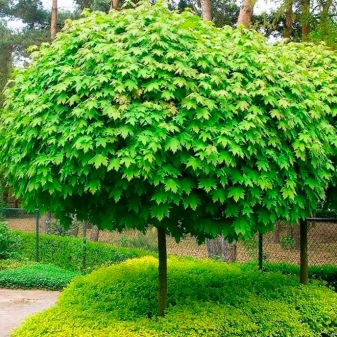
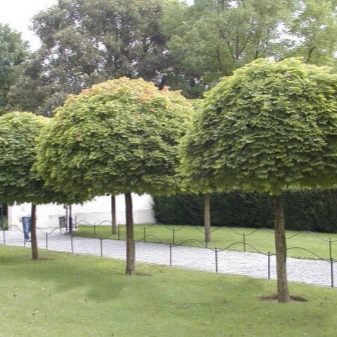
Peculiarities
Maple is traditionally considered a Canadian tree. It is enough to look at the country's flag for a statement to be convincing. But today it grows far from Canada in many regions and looks organic in every place. Probably, many have already appreciated not only the decorativeness of the tree, but also, for example, the delicious maple syrup, which is served with desserts.
Many people know maple from only one of its types, which is called holly. And they are very surprised when they meet with a spherical plant shape.
Globular maple is a low tree, the crown of which can reach 5 m in diameter. Not very active growth is inherent in this species, it will form a crown at the height where the plant is grafted. The great thing is that the tree does not need pruning, its beautiful chiseled crown will form on its own.

Other features of the spherical maple:
- its leaves are petiolate, divided into 5 segments, at the base they resemble the shape of a heart, have a pointed top (this makes the spherical maple in common with the holly maple);
- the upper side of the sheet is glossy, tactilely pleasant;
- in autumn, the leaves turn yellow, can cast orange, and fall off in winter;
- in the middle of spring and until the second summer month, yellow-green flowers about a centimeter in diameter form on the maple, they gather in inflorescences and are very fragrant;
- in autumn, two-winged fruits are formed from flowers;
- maple bark is almost black, cracked;
- the root system of the tree is strengthened 10 years after planting;
- stagnant moisture and depleted soil are destructive for this maple;
- withstand cold and even early long frosts;
- prefers light, but adapts to partial shade.
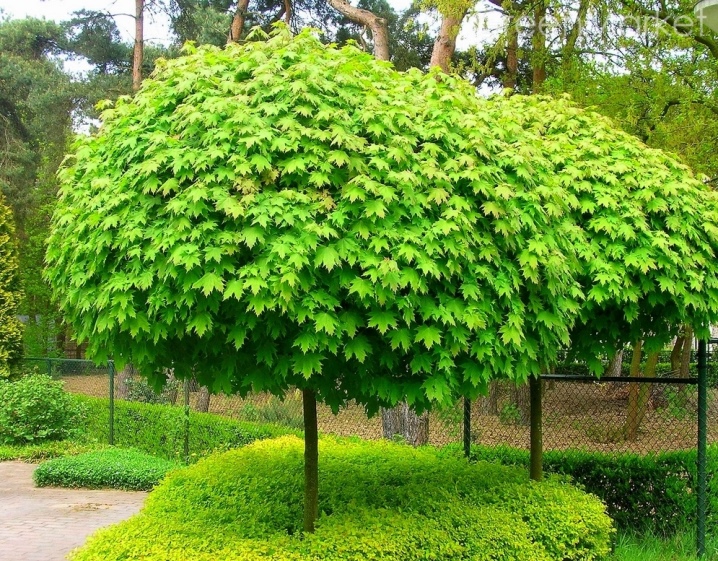
Globular maple can be called not the most demanding tree, easy to care for, pleasing with its pleasant flowering and aroma.
And gardeners are especially attracted to it by the absence of the need to cut the crown: a ball of foliage forms itself, which made the view popular.
Description of popular varieties
There are at least 8 globular maple varieties that are in high demand.
- Golden Globe. This variety is the rarest, its foliage is golden, which is why it is so valuable in landscape gardens.
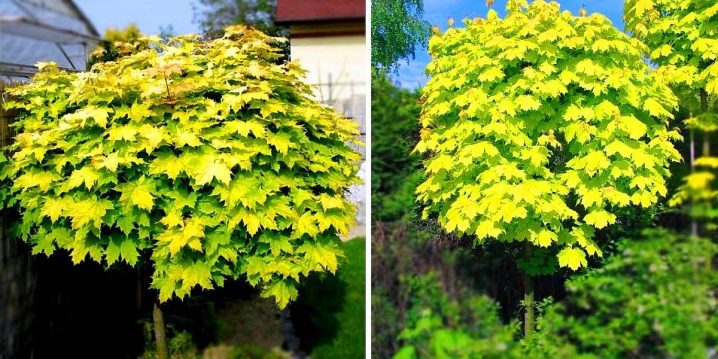
- Cleveland. The variety is distinguished by its round crown width and high trunk. Against the general background, he may even seem like a giant. If you need a tree with a large crown diameter, you need to turn to this variety.
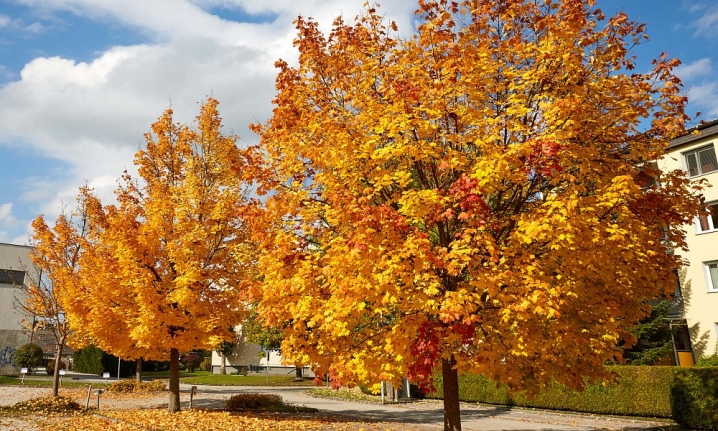
- Kolamner. This variety has an average height, its crown is not particularly wide. If you do not interfere with its growth, over time it will take on a conical shape.
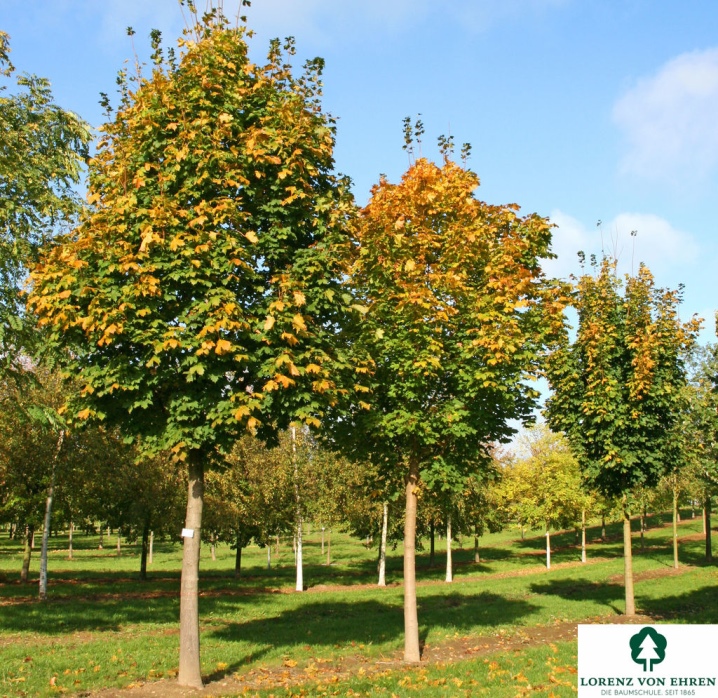
- Globozum. A small adorable tree that will grow slowly, but will delight you with very fragrant flowers. It adapts well to temperatures (both high and low). This variety is notable for its good tolerance to frequent changes in growth sites.

- Crimsong King. A tall maple with very dark, deep burgundy leaves. At first, the shape of its crown is elongated, and it may seem that the tree is going to grow in length. But over the years, the crown becomes spherical.
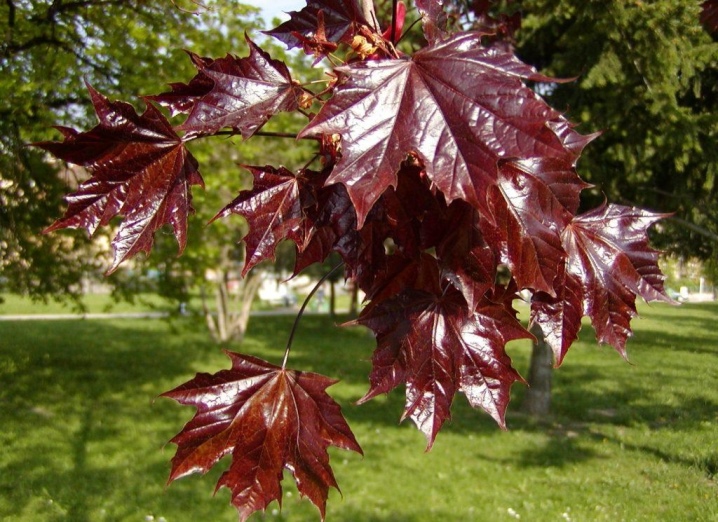
- Emerald Queen. The tree looks very delicate, because when blooming, its leaves have a bronze-pink tint. At first, the crown is ovoid, but over time, a ball also forms.

- Royal Red. The average height is not the difference between the variety, but what makes it stand out is the red leaves, which, as they grow, only gain color, darken and become very expressive. Only the Purple Globe maple variety can compete in this.
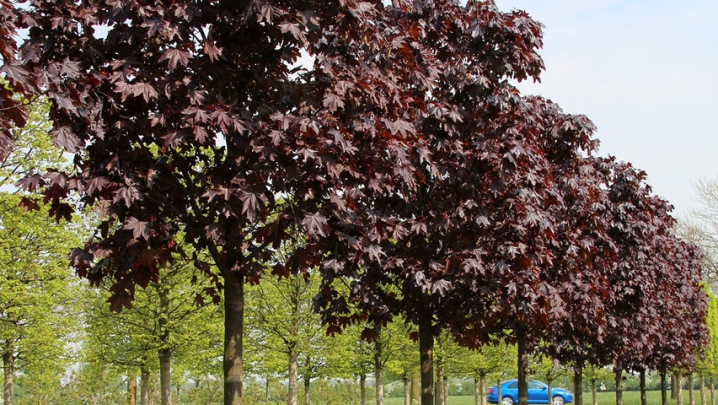
- Drumondi. The crown is wide, the trunk is not particularly high. The main difference is the white stripe bordering the leaves. The young maple tree has a pyramidal crown. But he is deprived of flowering. It also develops slowly.
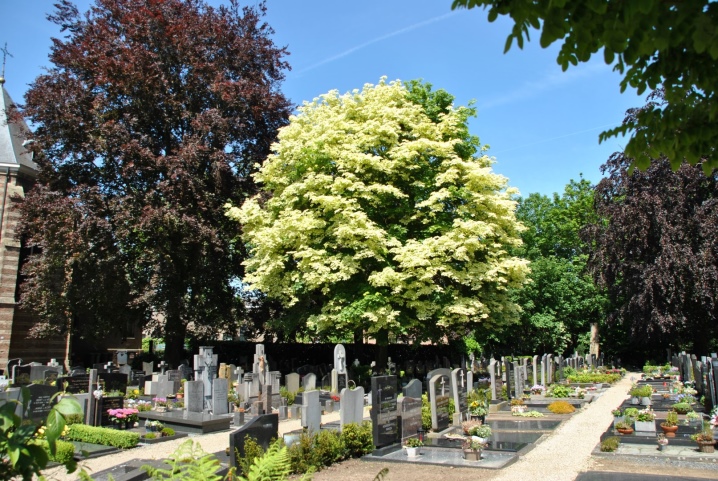
Any variety is decorative, and any can be a decoration of the site under the conditions of correct planting, competent care and prevention of diseases.
Growing
This type of maple is not the most demanding, livable, even beginners in gardening will be happy with how it responds to basic care.
Landing
The tree is light-requiring, it will grow well in fertile soils with good moisture.
On rocky soils, salt marshes and sands, it is unlikely to take root. It is desirable that there is good drainage in the place where the maple will grow. Planting should be planned for fall or spring.
Landing features:
- the distance between seedlings is not less than 2 and not more than 4 m;
- if you plan to plant a maple fence, the distance can be reduced to 1.5 m;
- the holes where the tree will sink should be well loosened;
- the optimal size of the fossa is 50 by 50 cm, the depth is the same;
- the bottom of the hole must be lined with rubble or broken brick;
- then a mixture of earth, sand, compost is poured into the hole until a mound forms above the hole;
- a young maple is planted in a prepared hole, covered with an earth mixture, which should be slightly compacted;
- the planting area is thoroughly watered with water, peat mulching is mandatory.
After planting, the plant requires attention, because it needs time to take root.
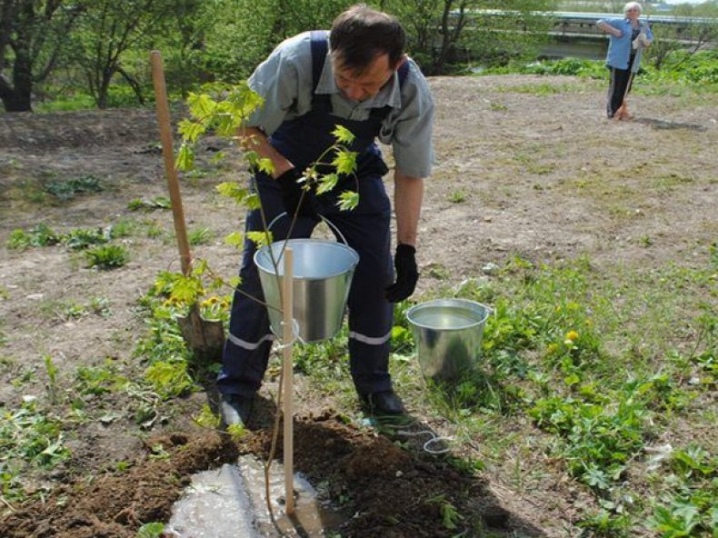
Care
In the spring, the tree needs to be fed. Mineral fertilizers are ideal. It will go well for feeding and rotted manure. One annual feeding is enough for the normal growth of the tree. Watering when dry is a must. Loosening the soil, removing weeds is also very important for a young tree. If branches are seen dry, diseased or simply frozen, they must be removed.
In the fall and spring, watering the maple tree once a month is enough. If the heat comes - at least once a week. On average, one plant will take 40 liters of water.
If the maple is young, it may still be sensitive to frost, so the root system of the tree should be covered with spruce branches and a suitable cloth should be wrapped around the trunk.
These measures will be preventive, but without them it is risky to expose young maple to prolonged exposure to subzero temperatures. You can cut a tree, but you can grow it spherical without cutting. By the way, although the tree does not need pruning, if the landlord decides to book it, it will calmly endure it.
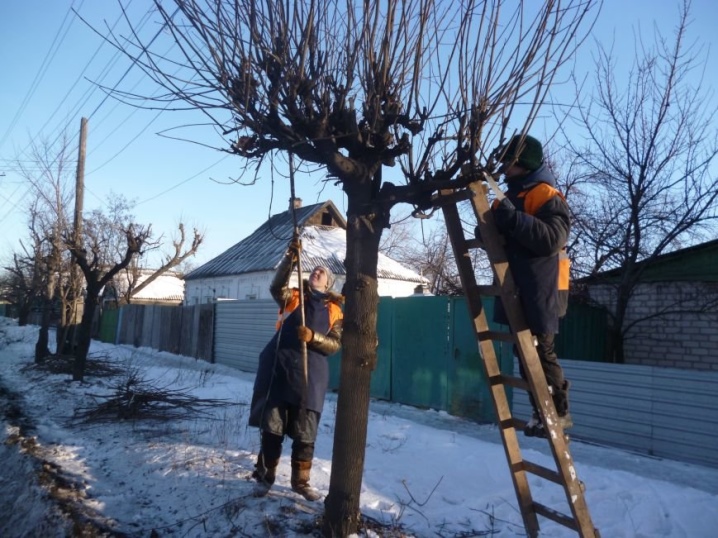
Reproduction
Culture multiplies:
- cuttings;
- seeds;
- vaccination;
- planting in the ground.
If you want to propagate a maple by grafting, you need to cut the bark on a healthy branch near the trunk in the spring, before the leaves have blossomed, and place the bud of the grafted tree under it.
Then this place must be strengthened with garden pitch, wrapped with cloth. Everything is carried out so that there is not a single question about the hygiene of the event.
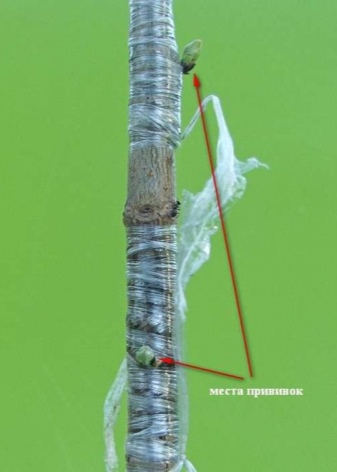

Diseases and pests
The spherical maple is not completely invulnerable. It is threatened by the maple whitefly, leaf weevil and mealybug. Insecticides will have to be used against these pests: copper sulfate, chlorophos, nitrofen. They have to deal with insects. The tree must be regularly sprayed with one of the listed compounds.
Maple can also become infected with such an ailment as coral spotting.
If spots have become visible on the shoots, if the branches have dried up, you need to urgently remove the dying branches, and treat the cuttings with garden pitch.
And so that the disease does not overtake the maple, from time to time you should remove the fallen leaves, cut off the affected branches, carry out an annual spring treatment of the tree with a fungicide and an insecticide.
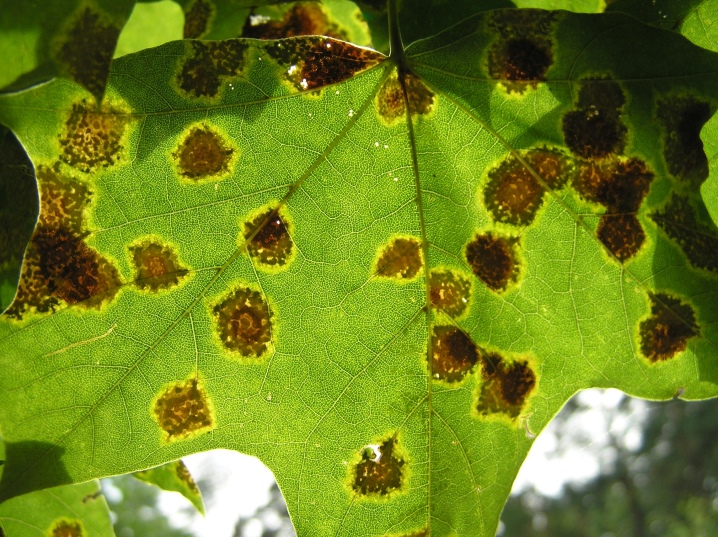
Application in landscape design
The tree looks self-sufficient and may not need other plant support. But in the vicinity of other maples and other plants, it does not seem alien. To consider how the globe maple changes the landscape design, you can use examples:
- such a tree on a trunk, in collaboration with an ideally designed shrub, looks like a toy, but the perfection of forms captivates;
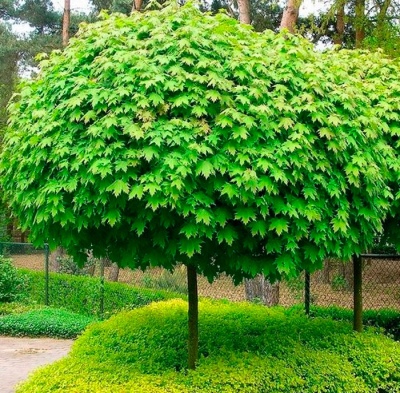
- red foliage looks good on a white background, trees standing in a row do not burden the image of the site, but add dynamics to it;
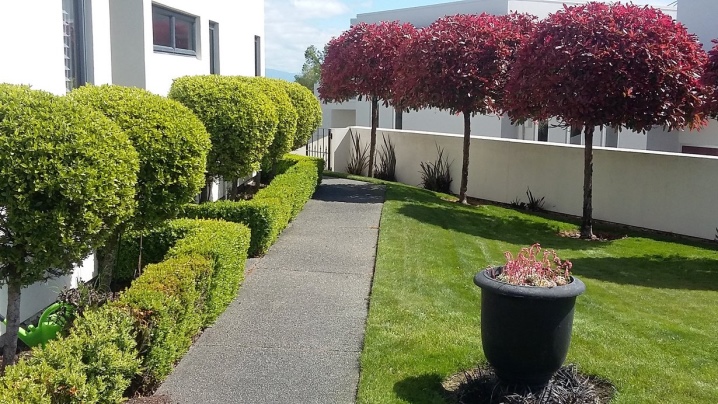
- maple can become a lively greeting and warmly welcome hosts and guests;

- dark red, burgundy and even brown leaves look even more expressive against the background of textured greenery;
- in the urban environment, this type of maple is also not lost.
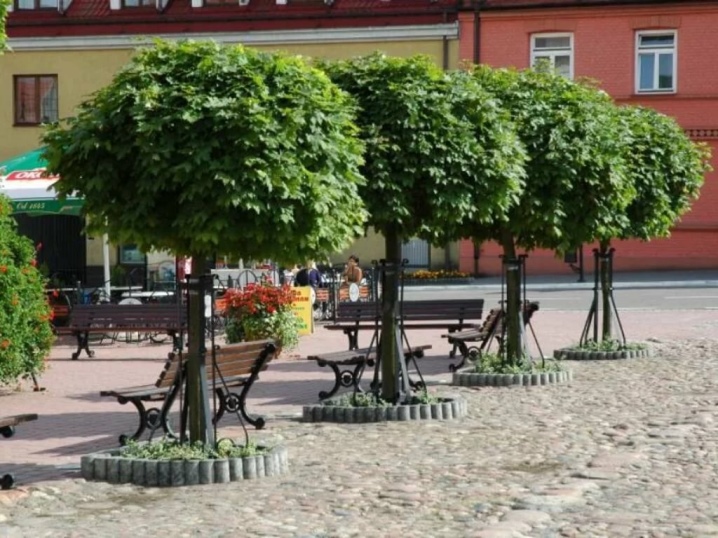
Planting a globular maple is not so difficult, the main thing is not to hesitate with leaving. When he is entrenched in the ground, he will delight with a calm disposition and ideal form.
How to propagate Norway maples correctly, see the video.



































































The comment was sent successfully.